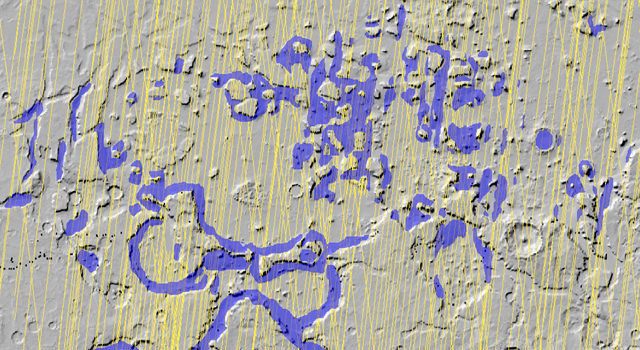[/caption]
Sure, it’s big news the Moon has water ice on the north pole, but Mars is loaded! A new extensive radar mapping of the middle-latitude region of northern Mars shows that thick masses of buried ice are quite common beneath the surface. The Mars Reconnaissance Orbiter’s Shallow Radar instrument has detected subsurface ice deposits that extend for hundreds of kilometers in the rugged region called Deuteronilus Mensae, about halfway from the equator to the Martian north pole. “We have mapped the whole area with a high density of coverage,” said Jeffrey Plaut from JPL. “These are not isolated features. In this area, the radar is detecting thick subsurface ice in many locations.”
The Shallow Radar instrument has been charting the locations of these hidden glaciers and ice-filled valleys, finding that the most common locations are around the bases of mesas and scarps, and confined within valleys or craters. After obtaining more than 250 observations of the study area, which is about the size of California, the science team is beginning to understand how these deposits may have been left as remnants when regional ice sheets retreated.
“The hypothesis is the whole area was covered with an ice sheet during a different climate period, and when the climate dried out,” Plaut said, “these deposits remained only where they had been covered by a layer of debris protecting the ice from the atmosphere.”
These buried masses of ice are a significant fraction of the known non-polar ice on Mars. The ice could contain a record of environmental conditions at the time of its deposition and flow, making the ice masses an intriguing possible target for a future mission with digging capability.
MRO will continue mapping the area to provide more insight into the buried ice.
Source: JPL

